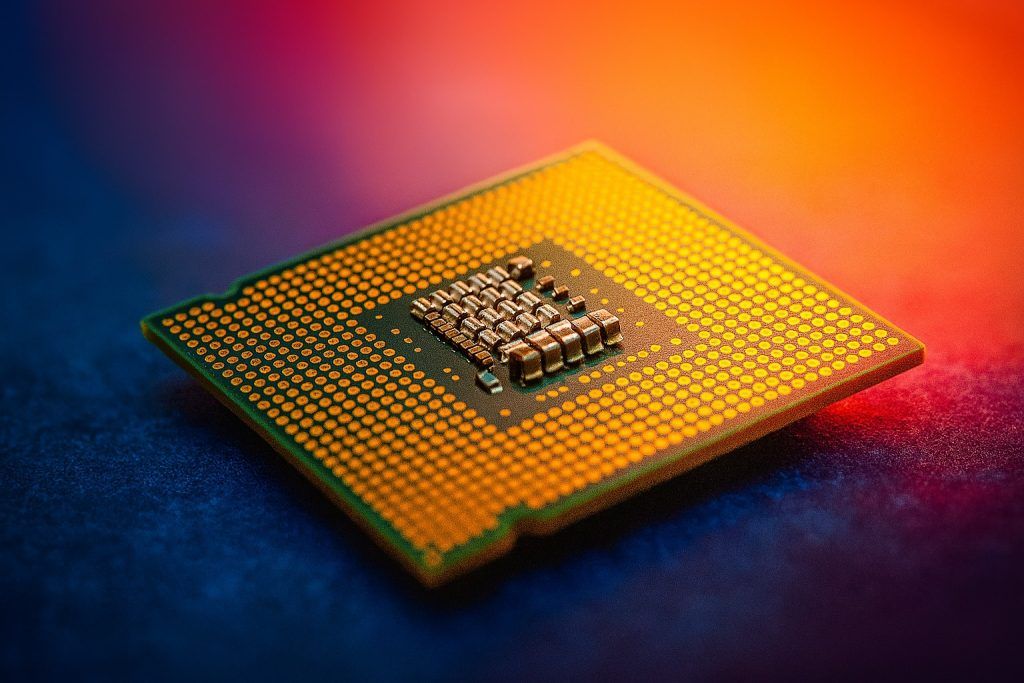Cybersecurity & Network Infrastructure
- 100-Organization Microsoft Server Breach: A sweeping cyber-espionage campaign exploiting a zero-day flaw in Microsoft SharePoint servers compromised about 100 organizations globally Reuters Reuters. Most victims were in the U.S. and Germany, including government agencies Reuters. The hack, uncovered by Netherlands-based Eye Security, allows attackers to drop backdoors for persistent access Reuters. “It’s unambiguous,” said Eye Security’s Vaisha Bernard, warning that unknown adversaries may have already planted additional backdoors Reuters. Microsoft alerted users to “active attacks” on self-hosted SharePoint on Saturday, though SharePoint Online was unaffected Reuters. Thousands of other servers could be at risk until patches emerge Reuters Reuters, making this one of the most serious exploits of the year.
- Undersea Internet Cables – Security Alarms: Lawmakers in Washington are pressuring Big Tech CEOs over submarine cable vulnerabilities Reuters Reuters. In an unusual move, three House committee chairs wrote to the CEOs of Alphabet (Google), Meta, Amazon, and Microsoft on July 21 asking if they’ve implemented safeguards against threats to undersea data cables Reuters. Over 400 fiber-optic cables carry ~99% of global Internet traffic Reuters, and officials fear espionage or sabotage by adversaries like China and Russia. The letter cites evidence of “coordinated malign activity” by China and Russia targeting subsea infrastructure in the Baltic, Indo-Pacific and elsewhere Reuters. It asks the companies to disclose any signs of tampering or tapping during cable repairs Reuters. U.S. regulators are already moving – FCC Chair Brendan Carr last week proposed barring cables that use Chinese equipment from connecting to the U.S. Reuters. With incidents of mysterious cable cuts (e.g. two Baltic cables severed in late 2024) Reuters, Western governments are treating cable security as critical infrastructure protection. The industry may face new compliance requirements to harden these undersea arteries.
Tech Policy & Legal Affairs
- Taxing User Data in Europe: In a test of tech giants’ business models, Italy has hit Meta, X (Twitter), and LinkedIn with an unprecedented VAT tax claim on the value of user data exchanged for “free” services Reuters. Italian authorities argue that when users sign up and provide personal data, it’s akin to a taxable transaction – effectively treating data as a form of payment Reuters. Italy is seeking €887.6 million from Meta and smaller sums from X (€12.5M) and LinkedIn (~€140M) Reuters. The companies filed appeals this week, setting the stage for a first-of-its-kind judicial tax trial in the EU Reuters. The case could influence EU-wide tax policy Reuters: if authorities ultimately deem data-as-payment taxable, any platform offering free services in exchange for user information across Europe may face VAT bills. Tech firms warn this approach could upend the “free internet” model, and the dispute comes amid broader EU-U.S. trade tensions Reuters Reuters. Tax experts are watching closely, as the outcome may redefine how digital services are monetized and taxed in the data economy.
Biotechnology & Health Tech
- Biogen’s $2B Biomanufacturing Bet: Marking its 30th year in North Carolina’s Research Triangle Park, biotech giant Biogen announced a $2 billion expansion of its drug manufacturing facilities Biospace Genengnews. The investment will fund a state-of-the-art eighth production plant (set to come online later in 2025) and upgrades across Biogen’s sprawling RTP campus Genengnews Genengnews. Biogen plans to boost capabilities in next-gen therapies – expanding its antisense oligonucleotide production, adding multi-platform fill-finish lines, and installing more advanced automation Genengnews. “With this investment, we will modernize and expand our manufacturing capability to enable our pipeline and provide resilient patient supply,” said Biogen’s pharma operations chief Nicole Murphy Genengnews. The move comes on top of ~$10 billion Biogen has already sunk into RTP over 30 years Genengnews. It underscores a broader trend of biopharma doubling down on manufacturing to support a wave of complex biologic and gene therapies in late-stage development. Local officials hailed the news, as Biogen – RTP’s largest biotech employer – should further cement the region’s status as a U.S. biomanufacturing hub.
- Roche’s Lung Drug Fails Phase 3: In a setback for respiratory medicine, Roche disclosed that its experimental antibody for severe COPD flopped in a Phase III trial Bloomberg. The drug, astegolimab, failed to significantly reduce COPD flare-ups in a broad study of current and former smokers Bloomberg. Hopes had been high that Roche’s biologic could cut the rate of life-threatening exacerbations in chronic obstructive pulmonary disease – a field where new therapies are badly needed. The trial’s failure dented prospects of a 2025 approval and sent Roche shares sliding ~1.6% in Zurich, wiping out the stock’s year-to-date gains Bloomberg Bloomberg. Analysts note that the result highlights the challenges of treating COPD, a disease notorious for defeating drug candidates. Roche’s setback may benefit rivals pursuing similar anti-inflammatory approaches. It also comes just after Roche recorded other trial disappointments (including a lung cancer immunotherapy combo that missed its goal Reuters), putting pressure on the Swiss pharma to find wins in its pipeline. Investors will watch if Roche pivots resources to other respiratory programs or doubles down to crack the COPD puzzle.
Space & Aerospace
- SpaceX Launch Scrubbed Seconds Before Liftoff: SpaceX experienced high drama on July 21 when it aborted a Falcon 9 launch just 11 seconds before liftoff Space. The mission, set from Cape Canaveral, was carrying two O3b mPOWER broadband satellites for SES. As the countdown neared zero Monday evening, onboard computers triggered an automatic abort, likely due to last-second sensor readings. The sudden scrub surprised spectators, but SpaceX quickly stood down to investigate. (A 57-minute backup window was available the next day Nasa.) Launch aborts are not uncommon – rockets are designed to halt if systems deviate from strict limits – but the incident shows even veteran launchers face last-minute glitches. SpaceX will retry once the issue is resolved, underscoring its “no launch unless everything’s right” ethos. Meanwhile, another Falcon 9 successfully lofted 24 Starlink satellites from California later in the week Space Space, underlining SpaceX’s rapid cadence despite occasional hiccups.
- NASA’s New Space Weather Mission: NASA is on the cusp of launching TRACERS, a pair of tandem science satellites that will probe Earth’s magnetic defenses Nasa Nasa. Encapsulated in their payload fairing on July 18, the twin spacecraft are scheduled to lift off July 22 at 2:13 PM EDT from Vandenberg Space Force Base atop a Falcon 9 Nasa. TRACERS will orbit from pole to pole, studying how the planet’s magnetic field interacts with surges of solar wind and energetic particles from the Sun Nasa. Scientists aim to learn how magnetic “reconnection” funnels solar plasma into our atmosphere – phenomena that drive auroras and sometimes disrupt satellites and power grids Nasa. The mission is part of NASA’s quest to better understand space weather and protect technology and astronauts from its effects Nasa. On the same launch, NASA is also flying several small tech demo payloads, including an experiment called PExT to test an AI-assisted satellite communications terminal Nasa. If all goes well, TRACERS will soon be beaming back data on the invisible magnetic battles raging above our poles, helping unlock the secrets of our cosmic shield.
- Blue Origin’s Rocket Makes History: The private space race notched a win as Blue Origin’s massive New Glenn rocket reached orbit on its debut test flight, a fact drawing new attention this week Ap Ap. Jeff Bezos’s 320-foot rocket lifted off from Florida back in January, but space watchers are still buzzing as details emerge on its follow-ups. The first launch successfully carried a test payload to a high orbit, making Blue Origin the first company since SpaceX to reach orbit on an inaugural flight of a large orbital-class rocket Spaceflightnow. Blue Origin’s CEO Bob Smith (and founder Bezos) celebrated the achievement – “We did it!” tweeted another executive, noting the booster nearly stuck its landing attempt Ap Ap. This week the company announced NASA’s twin ESCAPADE Mars probes will ride on New Glenn’s second flight, slated for late 2025 Space. However, CEO Dave Limp said that flight #2 is being pushed to August to ensure all systems are ready Youtube. With New Glenn, ULA’s upcoming Vulcan, and Europe’s Ariane 6, a new generation of heavy-lift rockets is arriving. Each success – and scrub – is watched closely as competition intensifies in orbital launch.
Green Energy & Climate Tech
- Renewables Surge in India: Fresh data show India set a new renewable energy record, installing 22 GW of clean power capacity in the first half of 2025 Greenenergytimes. That pace is 57% higher than the same period a year prior Greenenergytimes. According to analysts at Rystad Energy, solar power led the charge – a whopping 18.4 GW of solar PV added in six months – while wind contributed 3.5 GW Greenenergytimes. The surge comes as India races to meet ambitious targets and curb its reliance on coal. Despite the progress, experts note India still leans heavily on fossil fuels for now Greenenergytimes. The government has been incentivizing renewables through auctions and policy support, yielding a pipeline of massive solar parks and hybrid projects. Industry observers call the H1 milestone a “shot in the arm” for India’s green transition, while urging even faster growth to align with climate goals. If the momentum continues, India could approach ~45 GW of new renewables this year – a huge step toward its pledge of 500 GW installed capacity by 2030.
- Mega Solar Projects & Partnerships: In the global solar arena, a landmark deal in Azerbaijan was announced as Chinese PV manufacturer JA Solar will supply 1 GW of solar panels to two giant farms developed by UAE’s Masdar Prnewswire Prnewswire. The Banka and Bilasuvar projects, the largest in Azerbaijan’s history, will generate an estimated 1.53 billion kWh annually once operational, cutting over 1.15 million tons of CO₂ emissions per year Prnewswire. Masdar – which has grown its renewables portfolio to 51 GW by end-2024 – aims to double that by 2030 Prnewswire. The partnership highlights the Middle East’s green energy push, as oil-rich countries invest in solar both at home and abroad. In a similar vein, Taiwan-based GreenHarvest announced a tie-up with Amogy to deploy ammonia-to-hydrogen fuel systems for clean power in industrial sites Fuelcellsworks, tapping green ammonia as an emerging storage and shipping fuel. And in the U.S., Pennsylvania welcomed plans for $90+ billion in energy investments – including new natural gas plants, grid upgrades, and even 10 small modular nuclear reactors to support growing data center demand Penncapital Star Penncapital Star. While much of that investment is in fossil gas and nuclear, it underscores the scale of capital flowing into energy as AI and electrification drive up power needs.
- Nuclear Costs Under Scrutiny: A cautionary tale in the UK is sparking debate on nuclear energy’s economics. The planned Sizewell C nuclear plant’s budget has ballooned from an estimated £20 billion in 2020 to nearly £38 billion today Greenenergytimes. This nearly 2X cost explosion – announced recently by project backers – was called “shocking but predictable” by industry watchers Greenenergytimes. Observers note that large nuclear projects in Europe (e.g. Hinkley Point C and Flamanville 3) have all suffered huge overruns, exposing a “nuclear blindspot” in cost estimations Greenenergytimes. The Sizewell overruns are renewing calls for investing in cheaper renewables and energy storage as alternatives. Still, the UK government contends nuclear is needed for reliable, low-carbon power. How Sizewell C’s fate unfolds – whether costs can be reined in or if financing falls through – will be closely watched. The outcome could influence other countries weighing big nuclear builds versus scalable renewable projects. With South Africa’s Eskom also announcing plans to add 32 GW of renewables by 2040 while retiring coal Greenenergytimes Greenenergytimes, the global trend seems to favor green sources whose price tags are falling, in contrast to nuclear’s rise.
Automotive & Transport Tech
- Major EV Merger in China: In a strategic shakeup, China’s Geely Automobile is bringing its premium EV brand Zeekr back in-house just a year after Zeekr’s flashy U.S. IPO Electriccarsreport. Geely announced on July 21 it will acquire all remaining Zeekr shares at a valuation of about $6.8 billion, delisting the EV maker and folding it into Geely’s core business Electriccarsreport. The move underscores Geely’s “Return to One Geely” strategy to streamline operations and cut costs amid China’s intense EV price war Electriccarsreport. By taking Zeekr private, Geely will reorganize into two divisions: Geely Auto for the mass market and a Zeekr Group focused on premium electric models Electriccarsreport. The consolidation aims to boost efficiency and innovation, as Geely has also merged multiple software and engineering teams in recent months Electriccarsreport. Zeekr, launched in 2021, was Geely’s showcase for cutting-edge EV tech (it sells sporty models in China and Europe). Freed from quarterly Wall Street scrutiny, Zeekr can now iterate “free from the pressures of being publicly traded,” analysts noted Electriccarsreport. The merger is expected to close by Q4 and is seen as a bellwether: China’s EV sector may see more integration as incumbents like Geely, BYD, and SAIC battle dozens of startups in a competitive market. Investors in EV firms will be watching how Geely’s streamlined structure plays out – whether it delivers the promised cost savings and sharper competitive edge.
- Battery Cooling Innovation: A “game-changing” EV battery technology partnership was unveiled in South Korea. Oil refining company S-OIL and battery maker Bumhan Unisolution have teamed up to develop immersion-cooled battery packs for electric cars and energy storage systems Thecooldown. Immersion cooling – submerging battery cells in a special non-conductive coolant – is touted as a next-gen solution to improve battery safety and lifespan by keeping cells evenly cooled. It can dramatically reduce fire risk and thermal strain during fast charging or high performance use Thecooldown. Bumhan recently introduced an EV battery pack design that bathes cells in S-OIL’s proprietary cooling fluid Thecooldown. The partnership will accelerate commercialization of this technology. “The development of this immersion-cooled ESS is a case of commercializing next-generation technology that can ensure high safety and efficiency,” a Bumhan Unisolution official said, adding they intend to “lead the market” with their technical edge Thecooldown. S-OIL likewise sees broad potential, noting the collaboration “demonstrates the expandability of immersion cooling” not just for EV batteries but also data centers and grid storage Thecooldown. As EVs face scrutiny over battery fires, this innovation could be a major step forward in battery thermal management. Industry experts predict immersion-cooled packs may start appearing in luxury EV models and stationary storage first, where higher costs can be justified, and eventually trickle down as the tech matures.
- New EVs and Autonomy: Automakers rolled out new electric models and mobility ventures. Kia unveiled the Carens Clavis EV in India on July 21, an electric take on its popular family MPV aimed at the burgeoning South Asian EV market Electriccarsreport Electriccarsreport. China’s NIO launched the ONVO L90, a three-row electric SUV, expanding its lineup amid fierce domestic competition Electriccarsreport. In Europe, startup Leapmotor even preempted government incentives by offering its own EV purchase grants in the UK Electriccarsreport. On the autonomous front, an unlikely trio – Lucid Motors, delivery robot maker Nuro, and Uber – announced a partnership to develop a next-gen autonomous robotaxi service Electriccarsreport. The plan appears to combine Lucid’s EV tech with Nuro’s self-driving systems and Uber’s ride-hail platform. The companies claim this will fast-track a “premium autonomous ride experience.” (Notably, these robotaxis would not involve human drivers, raising regulatory questions.) While details are scant, the alliance of a luxury EV brand with an AV startup and a global ride-share leader underscores how self-driving tech is blurring industry lines. Analysts say we can expect more such cross-sector collaborations as firms race to commercialize autonomous mobility – a field that, despite hype, has seen slower-than-expected progress. This week’s news suggests a new strategy: team up and share expertise to finally make robotaxis viable at scale.
Finance & Cryptocurrency
- Crypto Market Hits $4 Trillion – IPOs Boom: Crypto winter is definitively over – the total cryptocurrency market cap roared to $4 trillion this week Reuters, an all-time high that’s reviving Wall Street’s interest. Flagship Bitcoin surged past $120,000 Reuters, and crypto firms are racing to go public to ride the wave. Crypto custody provider BitGo revealed on July 21 that it has confidentially filed for a U.S. IPO, joining a “rush” of listings in the sector Reuters. Just days earlier, crypto exchange Bullish also filed paperwork to float Reuters. Driving the frenzy are clearer regulations and rising institutional adoption – factors that have “reignited interest” in crypto equities Reuters. “These are the best market conditions the crypto space has seen in years, and companies want to take advantage of that,” said Matt Kennedy, IPO strategist at Renaissance Capital Reuters. However, he cautioned that the IPO window can shut abruptly in such a volatile industry Reuters. The $4T milestone reflects not just coin prices but also new money flowing into crypto investments and corporate treasuries. Industry veterans note a palpable shift in sentiment from the regulatory crackdowns of 2022–2023: multiple bills in Congress aim to integrate crypto into the financial system, and the SEC’s recent approvals of Bitcoin ETF products have further legitimized the space (no AI hype needed here). The coming months could see half a dozen crypto unicorns debut on public markets if conditions hold – a stark turnaround from the doldrums of two years ago.
- Big Banks Warm to Crypto: In a sign of the times, the largest U.S. bank is eyeing crypto-backed loans. Financial Times reports that JPMorgan Chase is exploring offering loans secured by clients’ cryptocurrency holdings (like Bitcoin and Ether) as soon as 2026 Reuters. This would be a remarkable development – JPMorgan CEO Jamie Dimon has long been a vocal Bitcoin skeptic (famously calling it “worthless” in the past). Yet even Dimon is conceding some demand: he recently acknowledged the bank “will be involved in stablecoins” and is allowing clients to buy crypto through its channels Reuters Reuters. According to insiders, JPMorgan’s crypto loan idea is still tentative and would hinge on favorable regulations. It comes as Bank of America and Citi work on their own USD-pegged stablecoins to facilitate faster payments Reuters. The backdrop is a broader push in Washington for crypto-friendly rules, as lawmakers see the U.S. falling behind in fintech innovation. If blue-chip banks like JPMorgan enter the crypto-collateral lending space, it could greatly expand liquidity for crypto holders – effectively letting investors borrow cash without selling their digital assets. However, it also raises questions around risk management (crypto prices can swing wildly) and how banks will custody these assets (Dimon still refuses to have JPMorgan directly hold clients’ coins Reuters). Industry experts are intrigued: a move by JPMorgan would lend significant legitimacy to crypto finance, but they warn it must be done prudently to avoid repeats of past leverage-fueled crypto collapses. For now, the fact that such a traditionally conservative institution is even considering crypto loans speaks volumes about how far digital assets have come into the mainstream Reuters.
This comprehensive news roundup highlights the major technology developments (outside of AI) from July 21–22, 2025. From cybersecurity crises and regulatory battles to breakthroughs in biotech, space, green energy, and crypto finance, these two days saw rapid progress across the tech world. Each story shows how technology continues to reshape industries and societies worldwide.




